SLUSCE2D April 2016 – January 2019
PRODUCTION DATA.
- 1 Features
- 2 Applications
- 3 Description
- 4 Revision History
- 5 Device Comparison
- 6 Pin Configuration and Functions
- 7 Specifications
- 8 Detailed Description
- 9 Application and Implementation
- 10Power Supply Recommendations
- 11Layout
- 12Device and Documentation Support
- 13Mechanical, Packaging, and Orderable Information
Package Options
Mechanical Data (Package|Pins)
- DBV|6
Thermal pad, mechanical data (Package|Pins)
Orderable Information
9.2.3 Application Curves
SETUP: bq21040 typical applications schematic; VIN = 5V, VBAT = 3.6V (unless otherwise indicated)
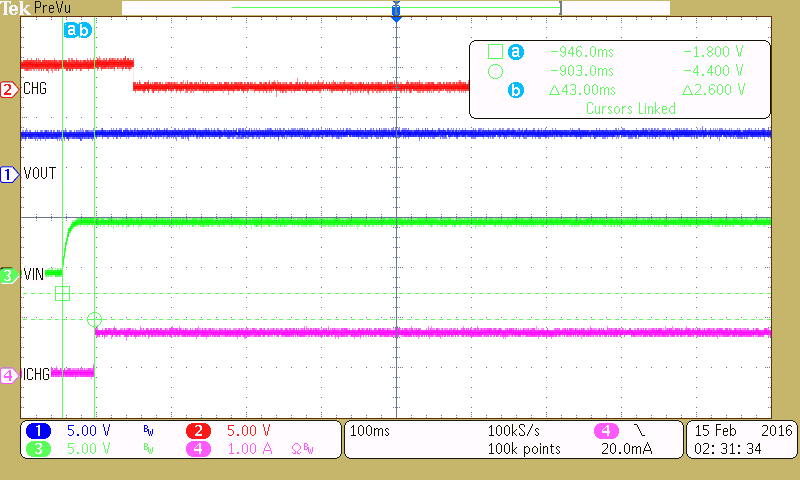
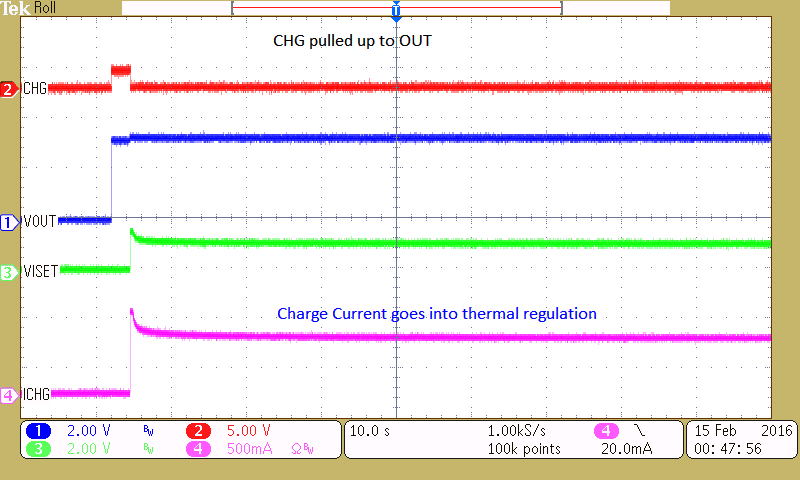
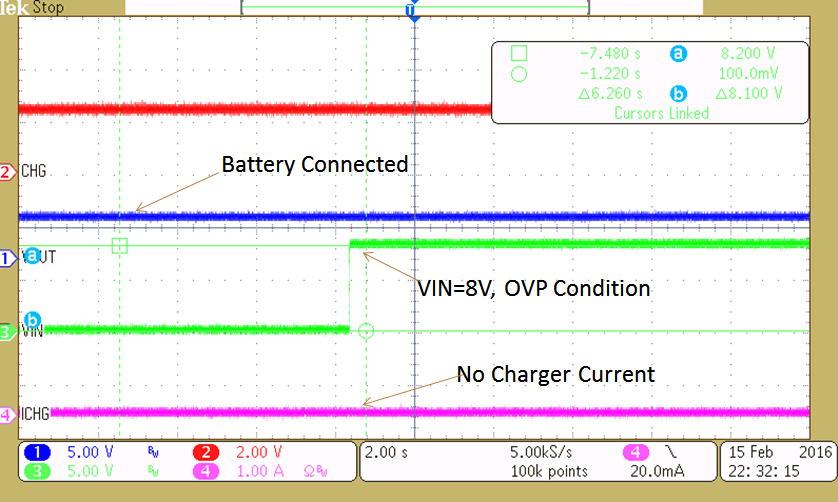
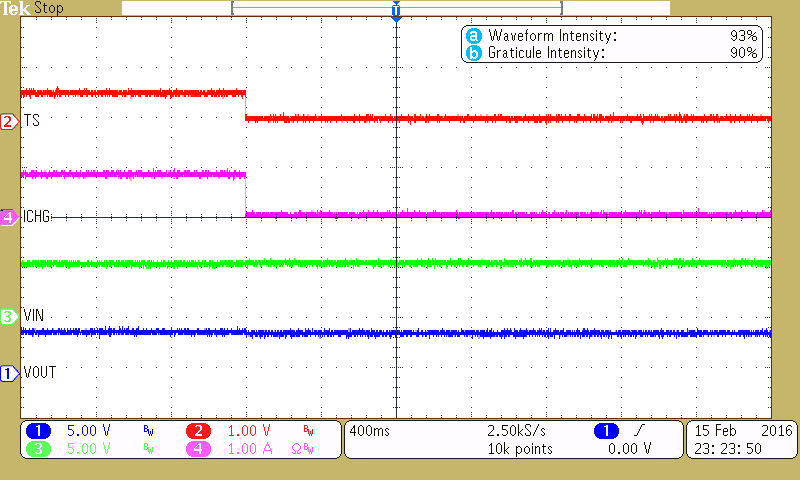
| 10-kΩ resistor from TS to GND. 10 kΩ is shorted to disable the IC | ||
.
Figure 17. TS Enable and Disable 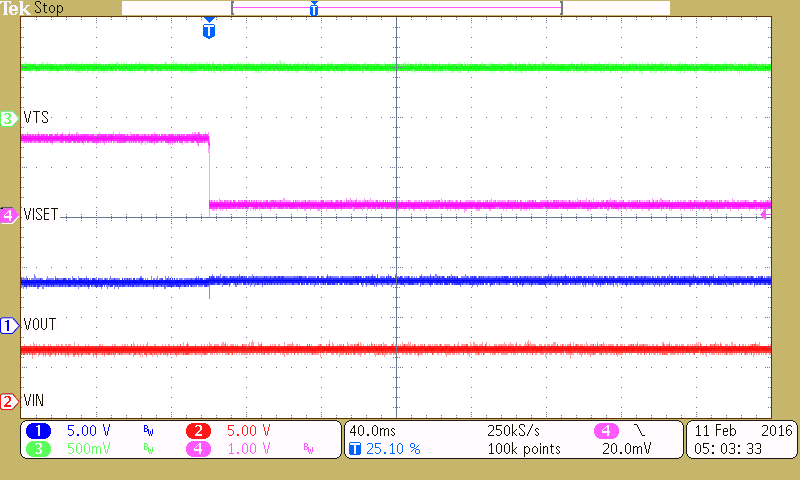
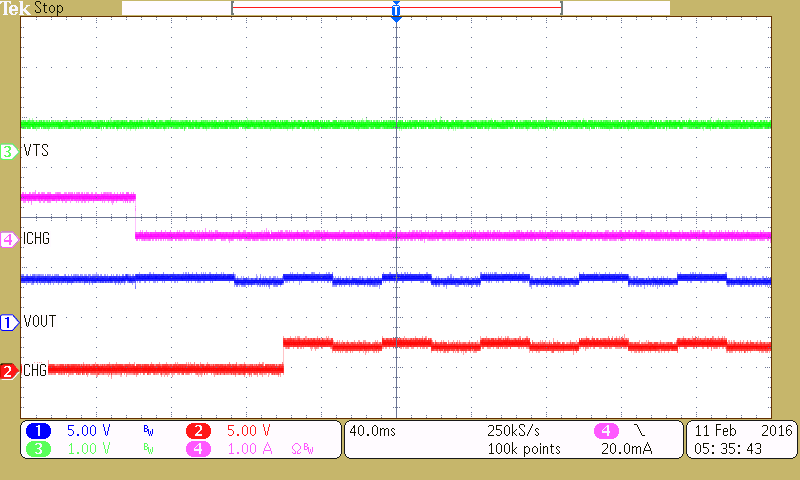
| Continuous battery detection when not in TTDM | ||
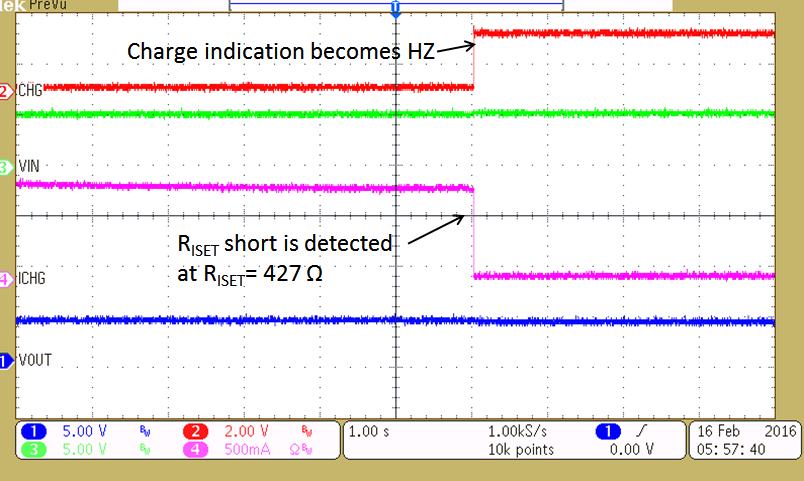
| CH4: IOUT (1A/Div) |
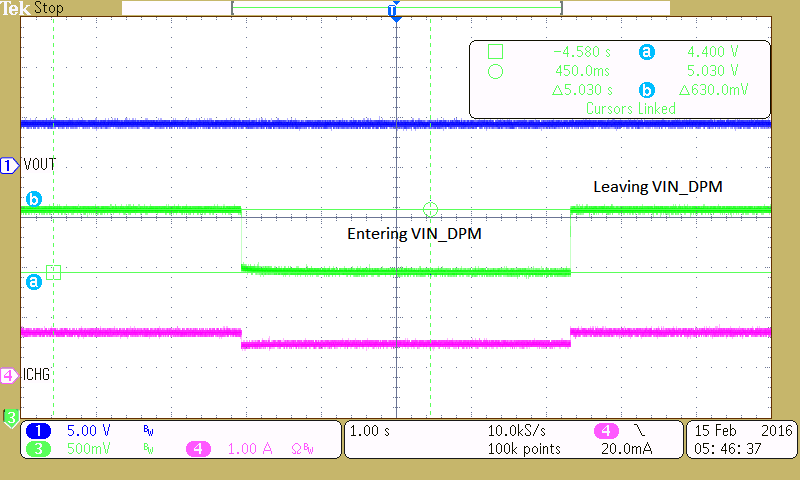
| CH4: IOUT (0.2A/Div) | ||
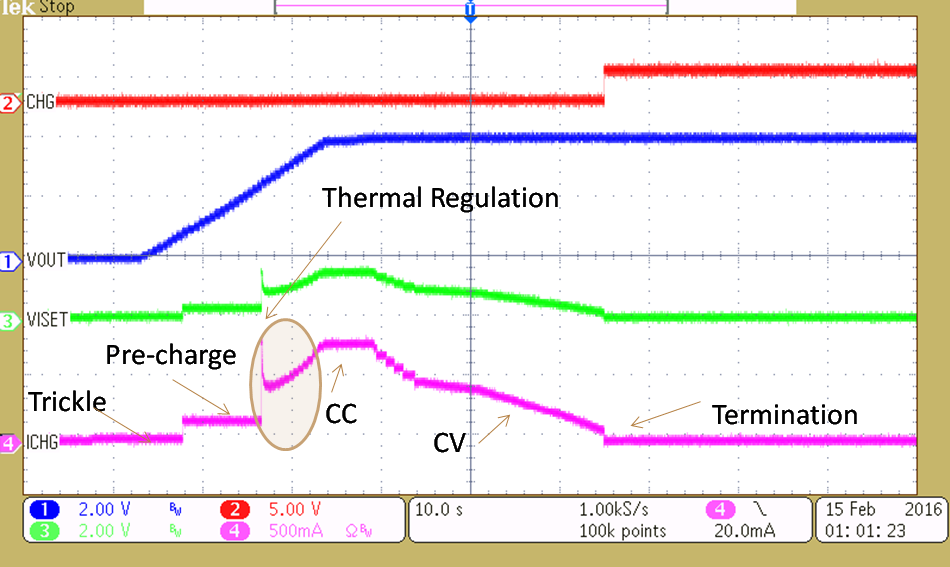
| The IC temperature rises to 125°C and enters thermal regulation. Charge current is reduced to regulate the IC at 125°C. VIN is reduced, the IC temperature drops, the charge current returns to the programmed value |
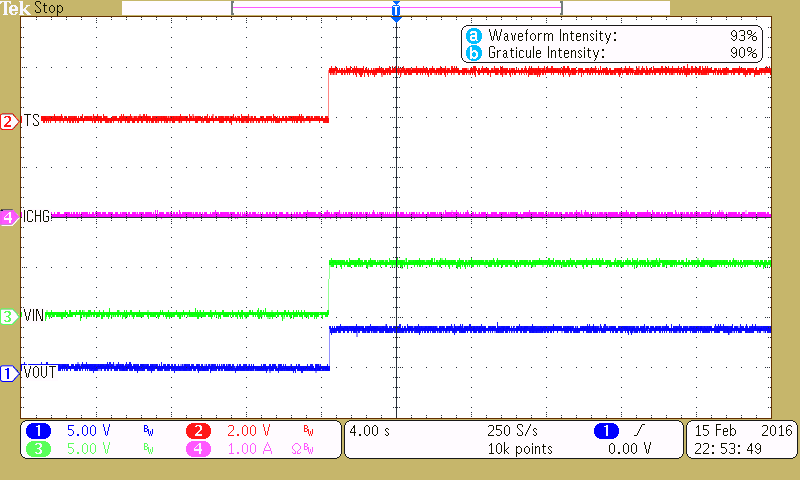
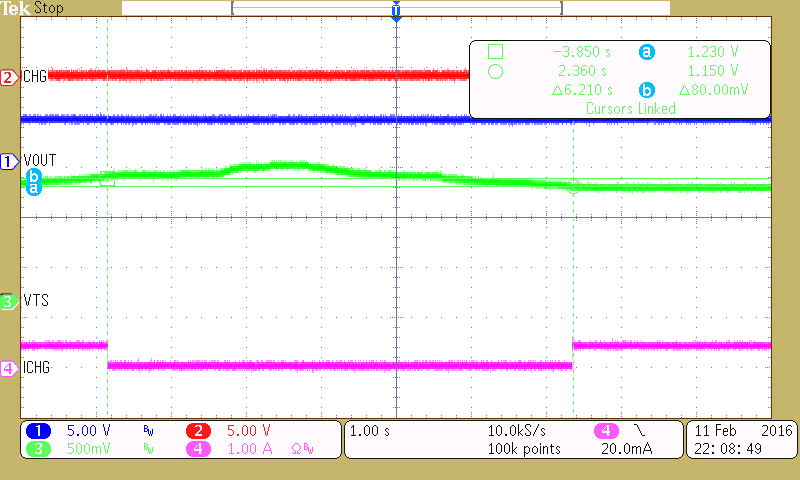
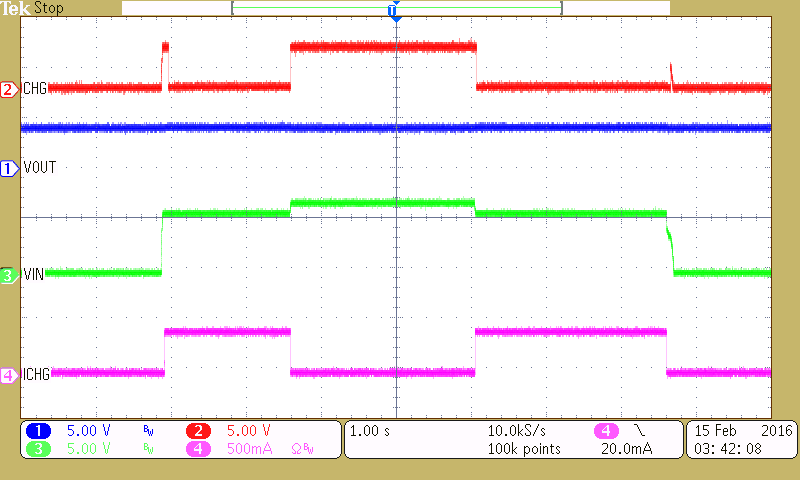
Operation – VIN 0 V → 6 V → 7 V → 6 V→ 0 V
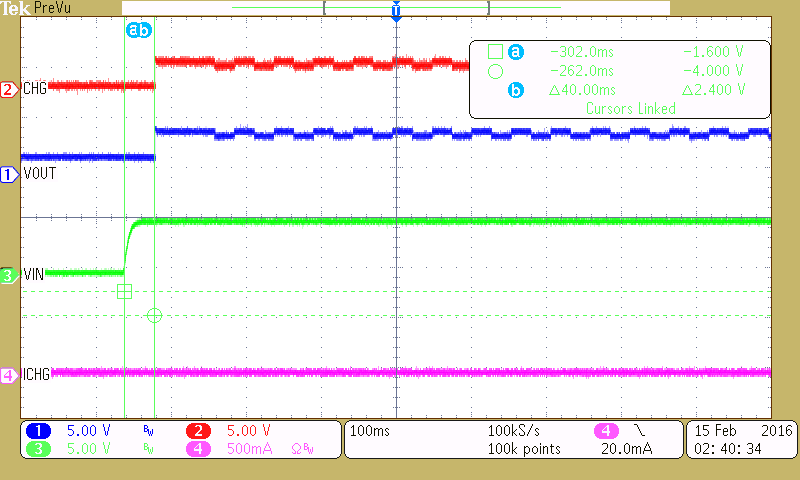
Fixed 10kΩ resistor, between TS and GND.
Figure 18. Power-Up Timing with No Battery and No Load – Battery Detection 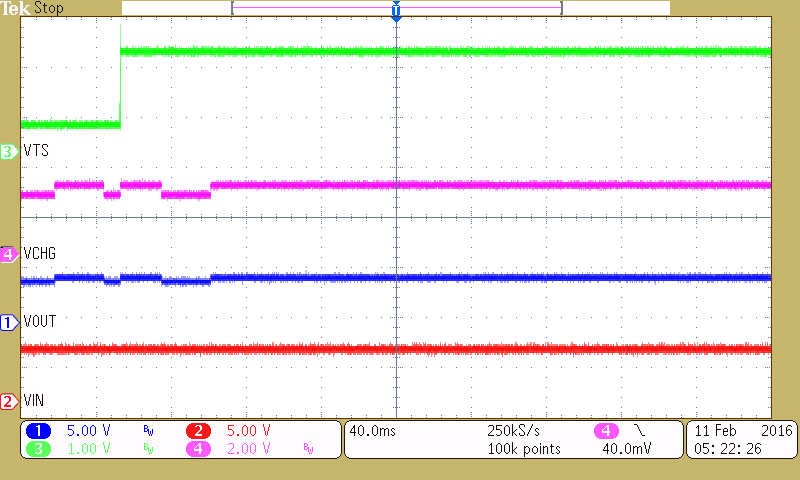
TS Disconnect 1st, With 100-Ω Load
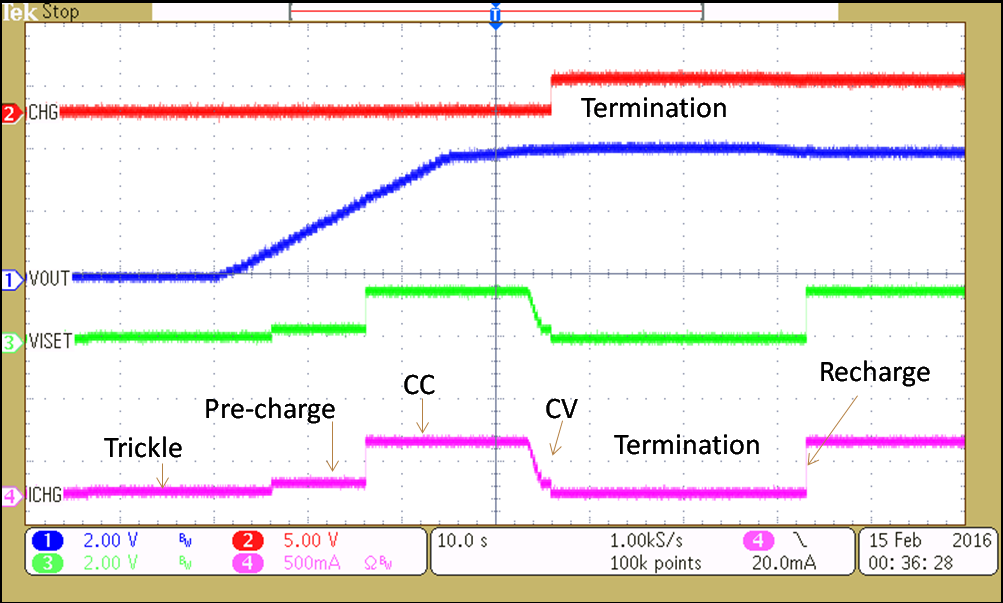
| CH4: IOUT (1A/Div) | ||
| Battery voltage swept from 0V to 4.25V to 3.9V. | ||
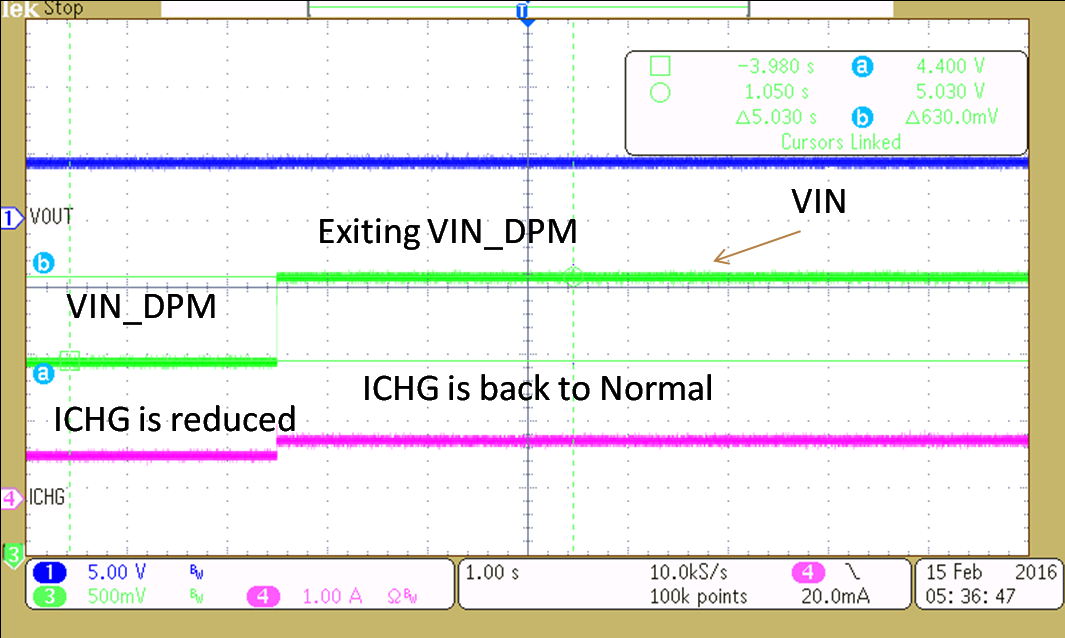
| CH4: IOUT (0.2A/Div) |
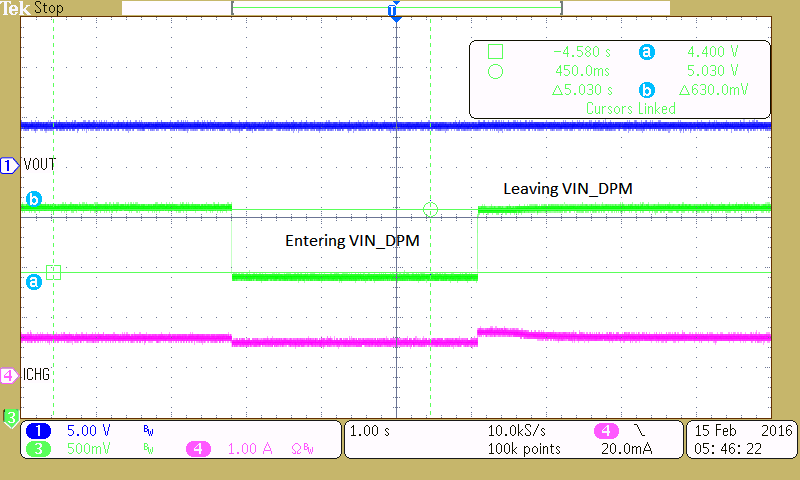
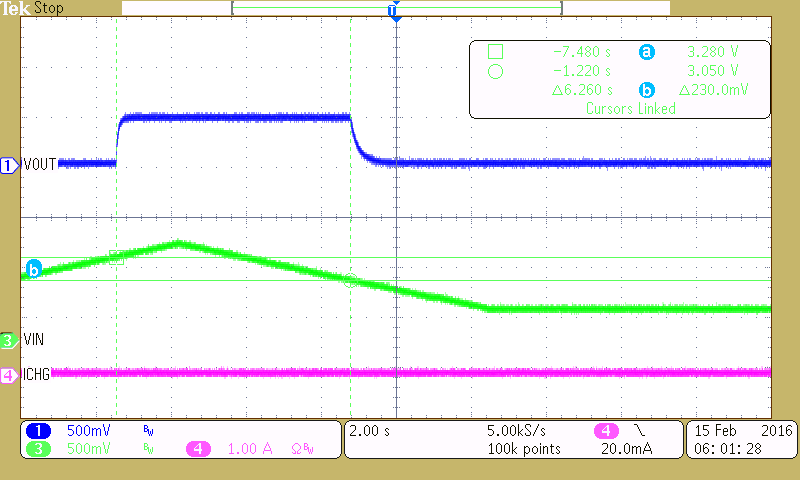
| VIN swept from 5 V to 3.9 V to 5 V | VBAT = 4 V | |